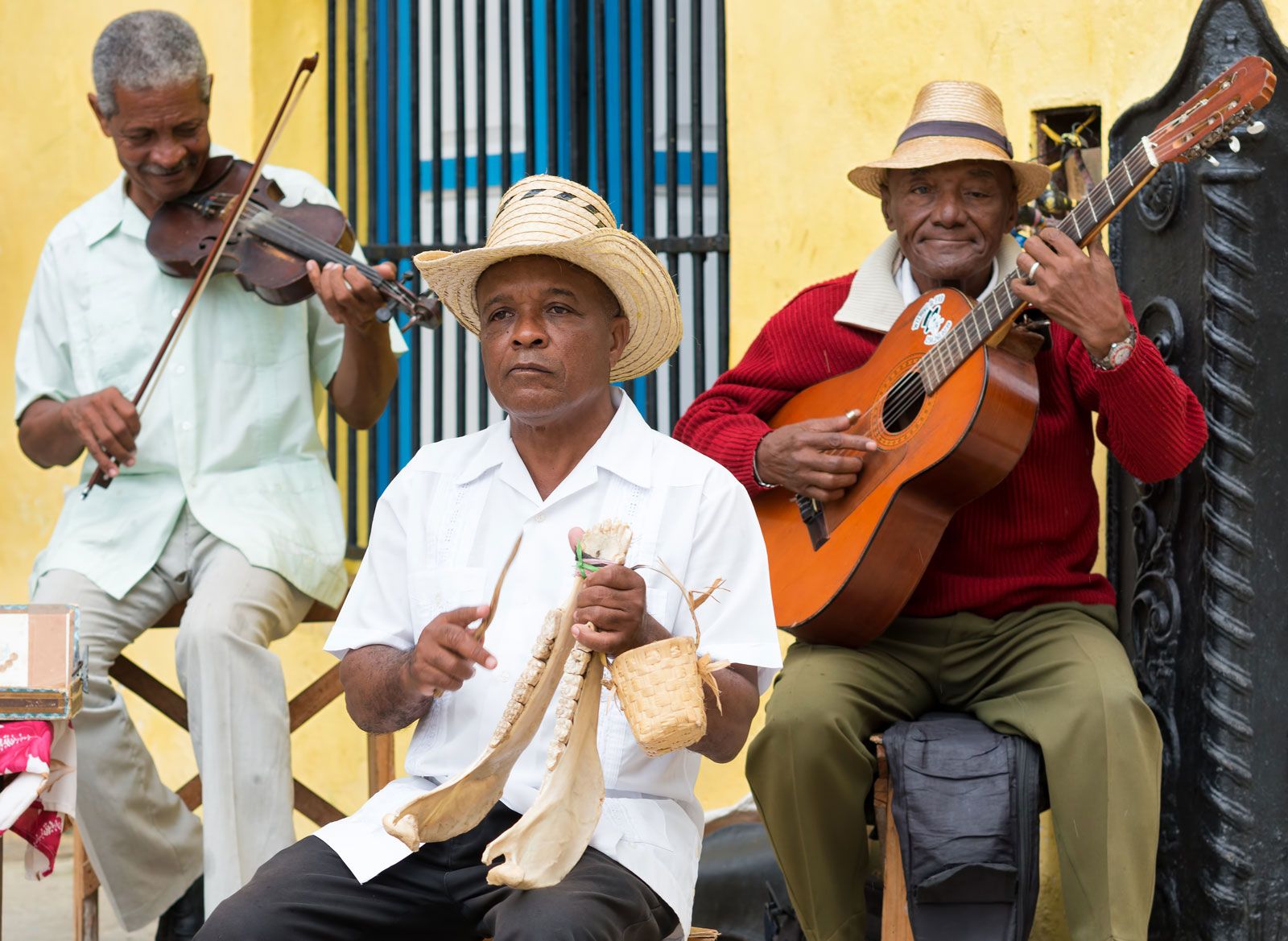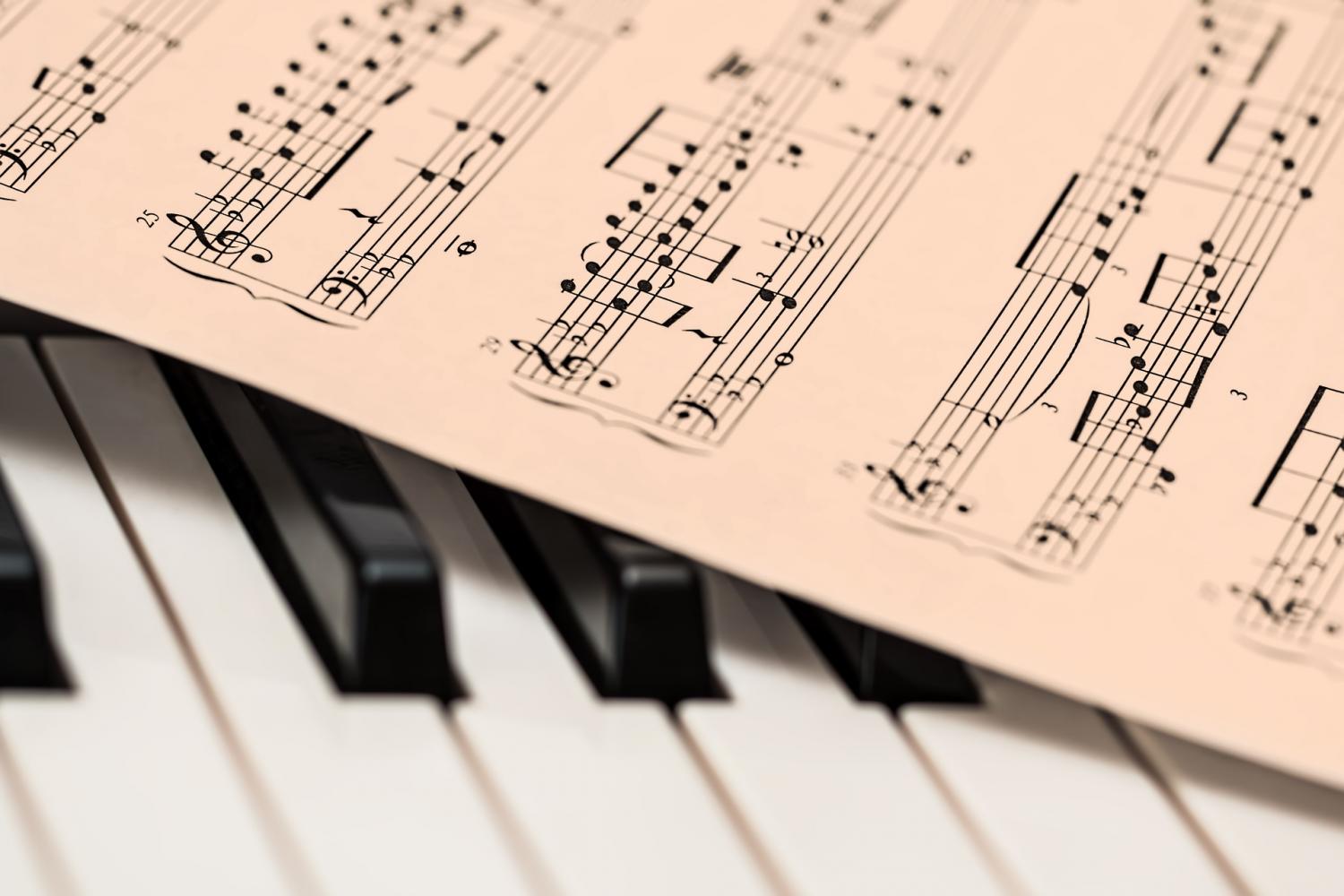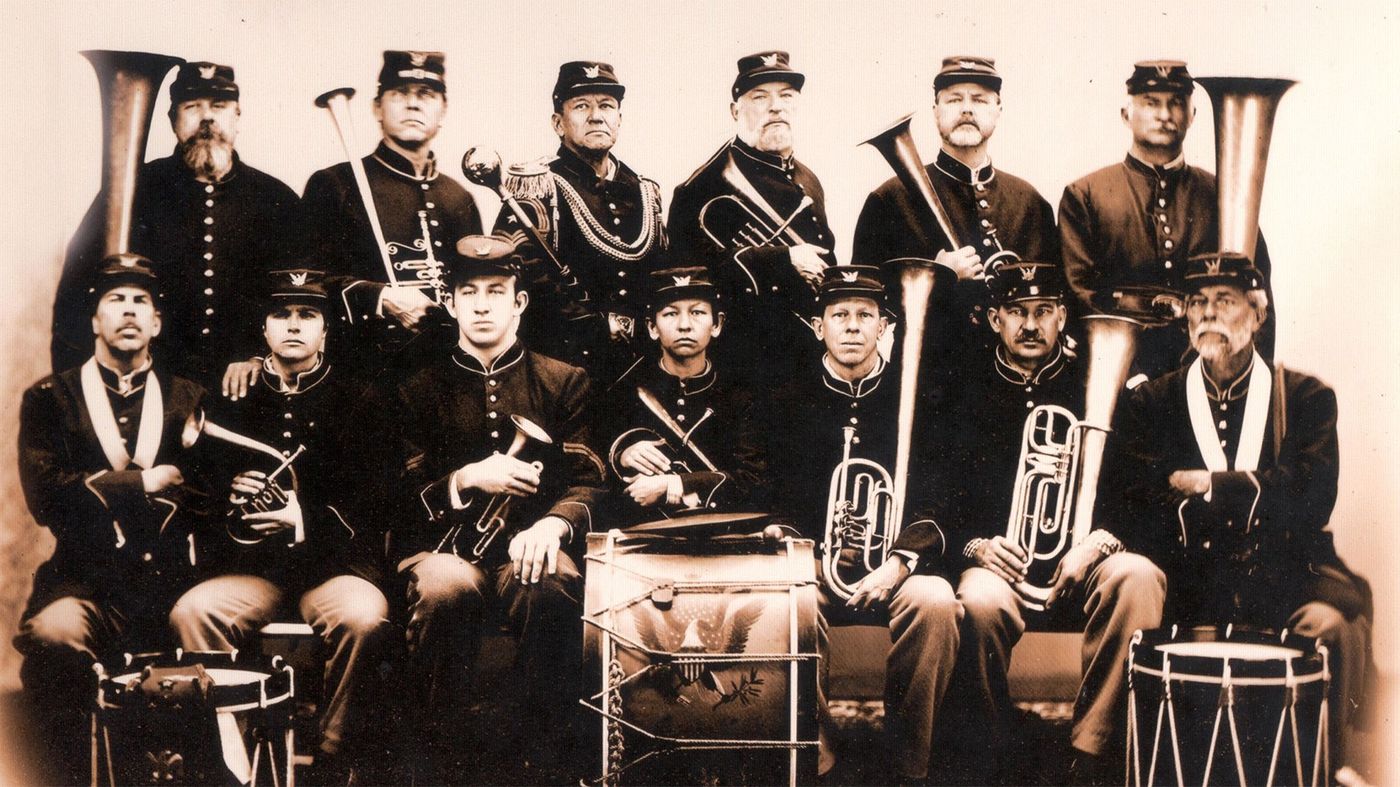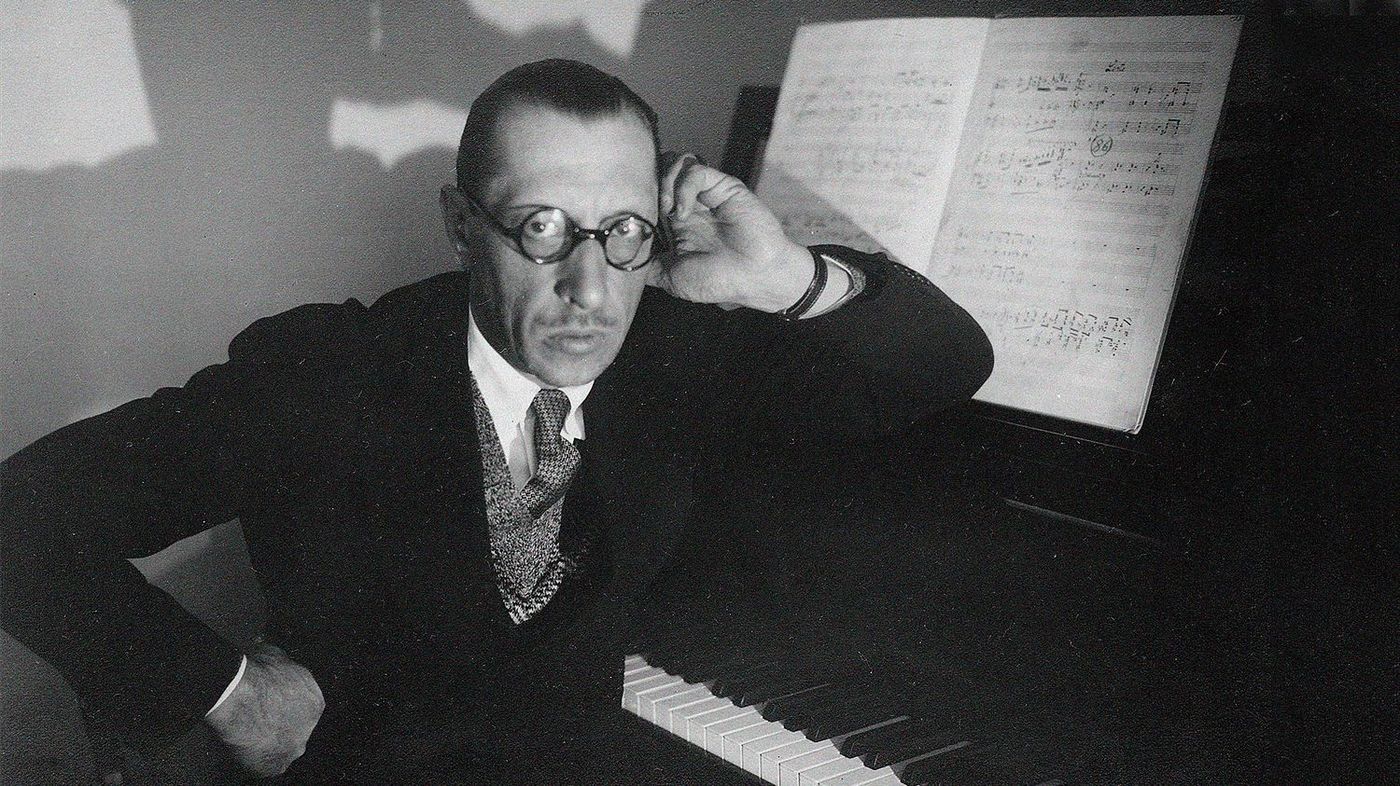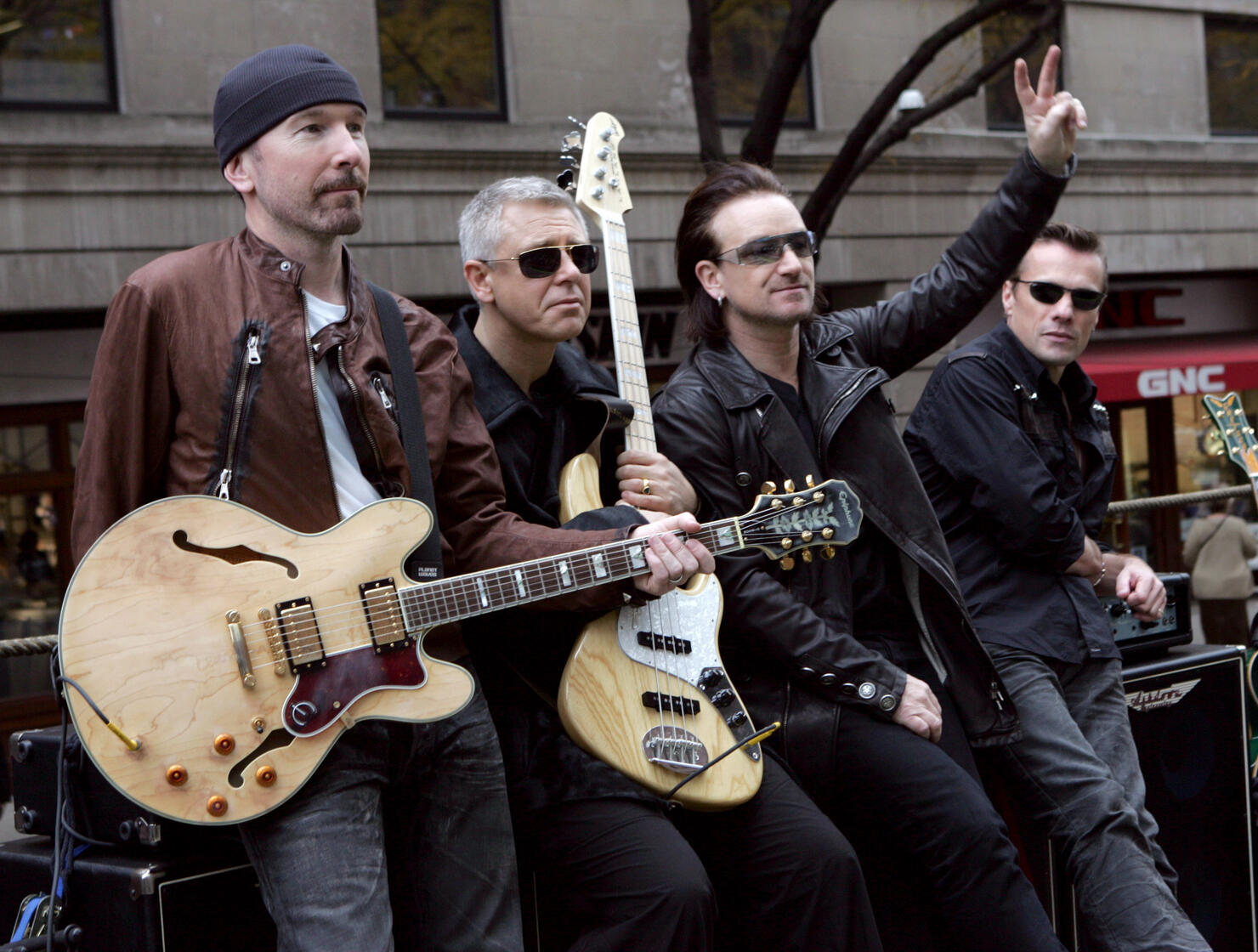Home>Events & Info>Music History>What Are The Eras In Jazz Music History
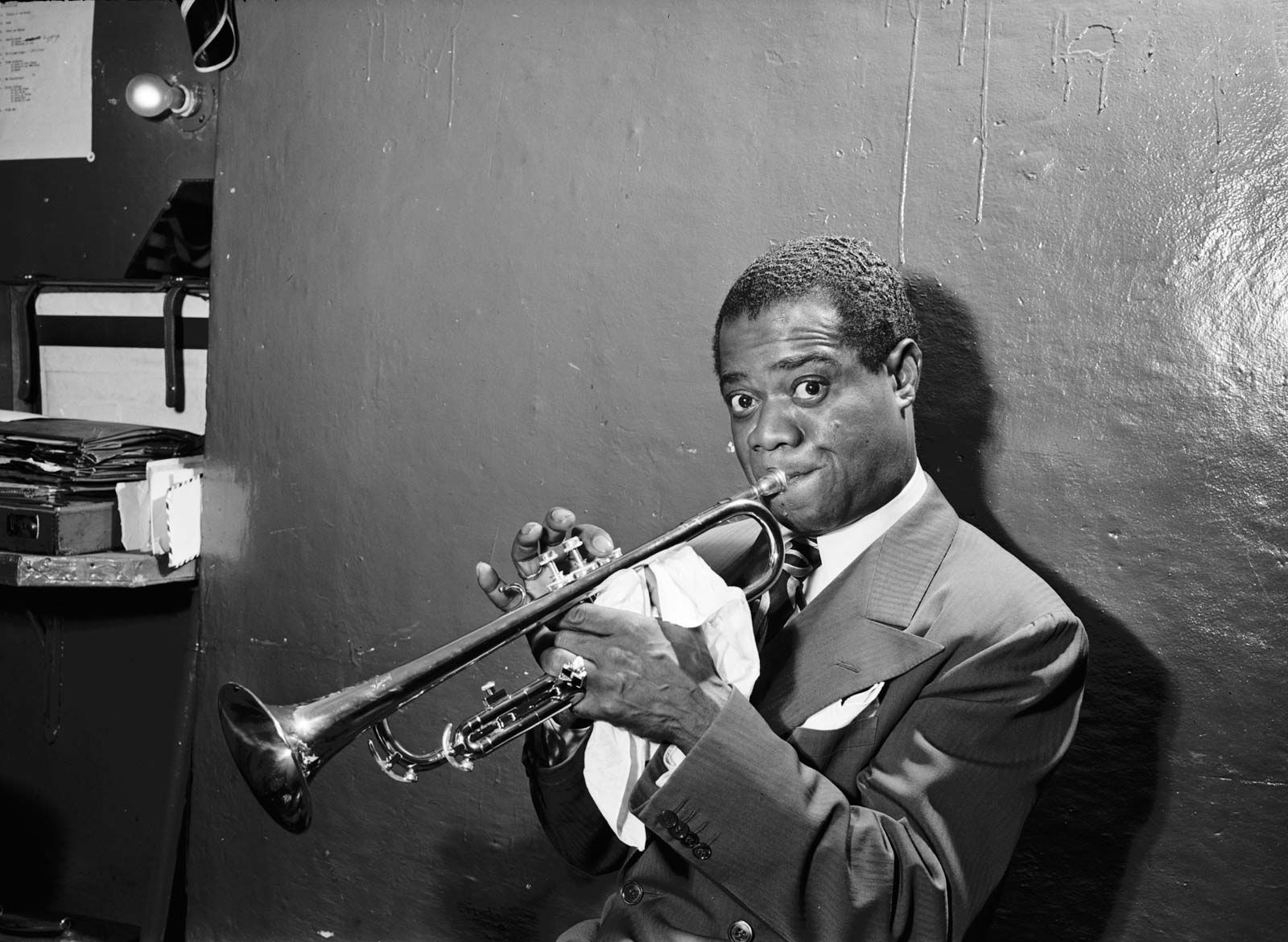

Music History
What Are The Eras In Jazz Music History
Modified: January 22, 2024
Explore the captivating eras in jazz music history and discover the evolution of this timeless genre. Dive into the rich heritage and influential figures that shaped music history.
(Many of the links in this article redirect to a specific reviewed product. Your purchase of these products through affiliate links helps to generate commission for AudioLover.com, at no extra cost. Learn more)
Table of Contents
Introduction
Music has always been a powerful form of expression, reflecting the cultural and social dynamics of a given time period. One genre of music that has had a profound impact on both American and global culture is jazz. Jazz is a musical genre that originated in the late 19th century and has evolved over time, spawning various eras that have shaped its unique sound and style.
Each jazz era represents a distinct phase in the development of this art form, characterized by different musical techniques, improvisation styles, and social influences. From the lively syncopation of ragtime to the experimental improvisations of free jazz, the eras in jazz music history have played a crucial role in shaping the genre’s evolution.
Understanding the different eras in jazz music history provides us with a deep appreciation for the genre’s complexity and diversity. It allows us to explore how artists experimented and pushed boundaries, embracing new musical ideas while responding to the social and cultural norms of their time.
In this article, we explore the various eras in jazz music history, delving into the key characteristics and notable figures that defined each era. So, let’s embark on a journey through time as we unravel the rich and vibrant tapestry of jazz music.
Ragtime Era
The Ragtime Era of jazz music history is considered the foundation of the genre. It emerged in the late 19th century and gained popularity in the early 20th century. Ragtime music is characterized by its syncopated rhythms, combining African rhythmic elements with European musical traditions.
The name “ragtime” comes from the syncopated or “ragged” rhythms that define the genre. It was primarily played on the piano, with its distinctive left-hand patterns and lively melodies. Ragtime music had a strong influence on dance forms like the cakewalk, and its infectious rhythms captivated audiences across the United States.
Notable figures of the Ragtime Era include Scott Joplin, often regarded as the “King of Ragtime”. His composition “Maple Leaf Rag” became an instant hit and a signature piece of the era. Other influential ragtime composers and performers include Jelly Roll Morton, James P. Johnson, and Eubie Blake.
This era also marked the rise of the music industry and the widespread availability of sheet music, leading to the popularization of ragtime music in both urban and rural areas. Ragtime music’s influence can be seen in later jazz styles, as it laid the groundwork for improvisation and blending of musical traditions.
While the Ragtime Era was a significant starting point for jazz music, it eventually gave way to the emergence of new jazz styles that pushed the boundaries even further. However, its infectious rhythms and lively melodies continue to be appreciated and celebrated today as an integral part of jazz music history.
New Orleans Jazz Era
The New Orleans Jazz Era, also known as Dixieland jazz or traditional jazz, emerged in the early 20th century and is considered the birthplace of jazz. It originated in the culturally rich and diverse city of New Orleans, where African, European, and Caribbean influences converged.
New Orleans jazz is characterized by its collective improvisation, polyphonic texture, and vibrant ensembles featuring a brass band or a combo of instruments like the trumpet, trombone, clarinet, piano, banjo, and drums. It draws heavily from African rhythms, blues, gospel, and ragtime music.
This era produced legendary jazz musicians who became pioneers of the genre, including Louis Armstrong, King Oliver, Jelly Roll Morton, and Sidney Bechet. These musicians showcased their virtuosity in small ensembles called “jazz combos” or in larger groups like brass bands.
New Orleans jazz was deeply rooted in the African American communities, with brass bands playing at funerals, parades, and social gatherings. It soon gained popularity beyond New Orleans, spreading to cities like Chicago and New York, where it became a force to be reckoned with in the jazz scene.
The New Orleans Jazz Era also witnessed the development of jazz improvisation as a distinctive feature of the genre. Musicians would take turns playing improvised solos, creating unique and spontaneous musical expressions within the collective framework of the ensemble.
Despite the evolution of jazz music in subsequent eras, the New Orleans Jazz Era remains a significant chapter in jazz history. Its vibrant and energetic style laid the foundation for the future of the genre while leaving an indelible mark on the global music scene.
Swing Era
The Swing Era, also known as the Big Band Era, is a period in jazz music history that spanned from the mid-1930s to the mid-1940s. This era is characterized by the popularity of big bands and their distinctive swing rhythm.
Swing music emerged as a response to the economic and social changes of the time, offering an uplifting and energetic sound that allowed people to escape the hardships of the Great Depression. Big bands, consisting of around 10 to 20 musicians, played a central role during this era, producing rich harmonies and vibrant orchestrations.
Some of the most prominent figures of the Swing Era include Benny Goodman, Count Basie, Duke Ellington, and Glenn Miller. These bandleaders gathered talented musicians and performed in ballrooms, dance halls, and on radio broadcasts, attracting large audiences who were eager to dance to the infectious rhythm.
The swing rhythm, characterized by its strong and steady pulse, encouraged dancers to engage in lively and acrobatic movements. The music was often characterized by a call-and-response pattern between the brass and reed sections, with soloists taking turns showcasing their improvisational skills.
The Swing Era witnessed the height of popularity of jazz music, with big bands becoming a cultural phenomenon and symbols of style and elegance. Swing music appealed to a wide audience, transcending racial and socio-economic barriers.
However, the Swing Era eventually gave way to new musical styles such as bebop and cool jazz. The decline of big bands was attributed to the economic strains caused by World War II and the changing musical tastes of the post-war generation.
Nevertheless, the impact of the Swing Era is undeniable, as it introduced jazz music to mainstream audiences and paved the way for the genre’s continued evolution. The infectious swing rhythm and the vibrant sounds of big bands continue to captivate listeners and serve as a testament to the golden age of swing.
Bebop Era
The Bebop Era, which emerged in the 1940s, marked a significant shift in jazz music history. It was a reaction to the commercialization and simplification of swing music, aiming for a more complex and intellectually demanding approach to jazz.
Bebop music was characterized by intricate melodies, fast tempos, unconventional harmonies, and intricate improvisation. Musicians in this era, such as Charlie Parker, Dizzy Gillespie, Thelonious Monk, and Bud Powell, sought to push the boundaries of jazz by introducing new harmonic and melodic concepts.
Unlike the big bands of the Swing Era, bebop was primarily performed in small groups known as combos. These smaller ensembles provided greater creative freedom for individual musicians to showcase their improvisational skills.
Bebop musicians often played at late-night jam sessions in small clubs, creating an intimate and interactive atmosphere. The music demanded active listening from both the musicians and the audience, as the complex melodies and rapid chord progressions required a high level of technical proficiency.
The Bebop Era brought forth a new generation of virtuosic musicians who revolutionized jazz improvisation. They developed intricate, lightning-fast melodic lines and advanced harmonic concepts, laying the groundwork for future jazz styles.
While bebop initially faced resistance from mainstream audiences due to its departure from the more accessible swing music, it had a profound impact on the development of jazz. Its influence can be felt in subsequent eras, as musicians integrated bebop elements into their compositions and performances.
The Bebop Era was a critical turning point in jazz history, shifting the focus from entertainment to artistic expression. It challenged traditional conventions and paved the way for new approaches to improvisation, harmonies, and musical expression.
Cool Jazz Era
The Cool Jazz Era, also known as West Coast jazz, emerged in the late 1940s and gained prominence in the 1950s. It represented a reaction to the intense and complex style of bebop, offering a more relaxed and understated approach to jazz music.
Cool jazz incorporated elements of classical music, creating a smoother, more controlled sound. It featured laid-back melodies, softer dynamics, and a greater emphasis on arrangement and composition. The use of counterpoint, complex harmonies, and intricate arrangements distinguished cool jazz from previous jazz styles.
Some of the notable figures of the Cool Jazz Era include Miles Davis, Chet Baker, Gerry Mulligan, and Stan Getz. These musicians explored a more introspective and introspective sound, characterized by a relaxed and elegant playing style.
The cool jazz movement gained popularity on the West Coast of the United States, particularly in California, as well as in cities like New York and Paris. It provided a contrast to the high-energy bebop music and appealed to a different audience.
Cool jazz also embraced a more collaborative approach, with musicians often engaging in collective improvisation rather than relying solely on individual soloing. The focus on ensemble playing and intricate arrangements created a refined and sophisticated sound.
The Cool Jazz Era had a significant impact on the development of jazz music, introducing new textures and tonalities. It paved the way for the fusion of jazz with other genres in subsequent eras and represented a shift towards a more intellectual and contemplative approach to improvisation.
While cool jazz eventually gave way to other styles like hard bop and modal jazz, its influence can still be heard in contemporary jazz music. The cool sounds and elegant melodies continue to captivate audiences and remind us of the unique creativity of this era.
Hard Bop Era
The Hard Bop Era, also known as Funky Jazz, emerged in the mid-1950s as a response to the cool and laid-back sounds of cool jazz. It represented a return to the roots of jazz, incorporating elements of blues, gospel, and R&B, and infusing the music with a renewed sense of energy and intensity.
Hard bop was characterized by its driving rhythms, soulful melodies, and powerful improvisations. Musicians in this era, such as Art Blakey, Horace Silver, Cannonball Adderley, and Lee Morgan, sought to reconnect jazz with its African American roots and express the social and cultural realities of the time.
The music of the Hard Bop Era featured a stronger emphasis on individual expression through extended solos and virtuosic playing. It combined elements of bebop with a groove-oriented approach, incorporating elements of blues and gospel music to create a more accessible and soulful sound.
This era saw the rise of instrumentalists who pushed the boundaries of their instruments, including saxophonists like John Coltrane and Sonny Rollins, and pianists like McCoy Tyner and Herbie Hancock. These musicians engaged in intense improvisations, showcasing their technical prowess and emotional depth.
Hard bop also placed a greater emphasis on group interaction and collaboration, with musicians engaging in dynamic interplay and exchanging musical ideas on the bandstand. The rhythmic foundation provided by the drums and bass allowed for the exploration of intricate and syncopated rhythms.
The Hard Bop Era not only revitalized jazz music but also influenced other genres such as soul, funk, and even rock. Its energetic and soulful sound resonated with audiences and contributed to the continued evolution of jazz as a dynamic and ever-changing art form.
While the Hard Bop Era eventually gave way to other jazz styles like modal jazz and free jazz, its impact can still be felt today. Its fusion of blues and gospel with the improvisational spirit of jazz continues to inspire musicians and captivate audiences, reminding us of the enduring power of this era.
Modal Jazz Era
The Modal Jazz Era, which emerged in the late 1950s and gained momentum in the 1960s, marked a departure from the complex chord progressions of previous jazz styles. Modal jazz placed a greater emphasis on melodic improvisation over static, often repetitive, modal vamps or patterns.
One of the key figures associated with modal jazz is Miles Davis, particularly his groundbreaking album “Kind of Blue.” In this era, Davis and other musicians, such as John Coltrane, McCoy Tyner, and Herbie Hancock, embraced a more exploratory and introspective approach to improvisation.
Modal jazz focused on the use of scales or modes as the basis for improvisation, allowing for a freer and more open approach to soloing. This departure from traditional chord progressions provided musicians with greater freedom to explore harmonic and melodic possibilities.
The repetitive and hypnotic nature of modal jazz allowed for extended improvisations and a deeper exploration of tonal colors and textures. Musicians would often delve into long, flowing lines and experiment with different scales and intervals.
The Modal Jazz Era was also characterized by a greater use of space and silence in the music, creating a more contemplative and atmospheric sound. This style allowed for a more introspective and meditative approach to improvisation, contrasting with the high-energy and virtuosic nature of previous jazz styles.
Modal jazz had a significant impact on the landscape of jazz and beyond. Its influence can be heard in other genres such as fusion, jazz-rock, and even contemporary electronic music. The exploration of modes and a more abstract approach to composition and improvisation opened up new possibilities for expression.
While modal jazz eventually gave way to other stylistic developments in jazz, its legacy remains strong. Its emphasis on melodic exploration and the use of modes as a foundation for improvisation continues to inspire musicians and shape the landscape of jazz music.
Free Jazz Era
The Free Jazz Era, which emerged in the late 1950s and gained momentum in the 1960s, pushed the boundaries of jazz even further. Free jazz represented a radical departure from traditional jazz conventions, embracing a highly experimental and avant-garde approach to composition and improvisation.
Free jazz emphasized the concept of improvisational freedom, with musicians breaking away from established musical structures and exploring new sonic territories. It challenged the notions of melody, harmony, and rhythm, often incorporating extended techniques and unconventional playing methods.
Leading figures of the Free Jazz Era include Ornette Coleman, Albert Ayler, John Coltrane, and Sun Ra. These artists pushed the boundaries of jazz music, embracing dissonance, atonality, and collective improvisation.
Unlike previous jazz styles that relied on pre-determined chord progressions or scales, free jazz encouraged total spontaneity and group interaction. Musicians would often engage in collective improvisation, communicating and responding to each other in the moment.
Free jazz also expanded the sonic palette of jazz by incorporating unconventional instrumentation, such as the use of unconventional wind instruments, multiple drummers, and electronic effects. The aim was to break away from conventional tonal and rhythmic structures and explore new sonic landscapes.
The experimental nature of free jazz sparked controversy and divided opinions among jazz enthusiasts and critics. Some viewed it as a radical and innovative form of expression, while others found it challenging and difficult to comprehend. Regardless, free jazz opened the door for a more abstract and improvisational approach to creating music.
The influence of free jazz extends beyond the genre itself, inspiring the development of various experimental and avant-garde movements in music. Its impact can be heard in genres as diverse as rock, noise, and contemporary classical music.
While free jazz remains a niche and challenging genre, its contributions to the jazz landscape and its influence on the broader musical world cannot be overstated. It represents a bold and adventurous exploration of the possibilities of sound, challenging conventions, and expanding the boundaries of artistic expression.
Fusion Era
The Fusion Era, which emerged in the late 1960s and gained momentum in the 1970s, marked a significant cross-pollination of jazz with elements of rock, funk, and other genres. This era brought together jazz musicians and artists from different backgrounds, resulting in a fusion of diverse musical styles.
Fusion music sought to combine the improvisational nature of jazz with the energy and electrified sound of rock music. It incorporated elements of rock instrumentation, such as electric guitars, synthesizers, and drums, with the harmonic sophistication and improvisational techniques of jazz.
One of the key figures associated with the Fusion Era is trumpeter Miles Davis, particularly his albums “In a Silent Way” and “Bitches Brew.” These albums represented a departure from his previous modal jazz and embraced a more experimental and electric sound.
Fusion music emphasized extended improvisations, incorporating elements of funk, Latin rhythms, and even electronic music. This era witnessed the rise of skilled instrumentalists such as Chick Corea, Herbie Hancock, Weather Report, and Mahavishnu Orchestra, who pushed the boundaries of jazz with their virtuosic playing and innovative compositions.
Fusion music gained popularity among a wide range of audiences, attracting both jazz enthusiasts and rock fans. The incorporation of rock and funk elements into jazz created a more accessible and groove-oriented sound, appealing to a new generation of listeners.
The Fusion Era also had a significant impact on the development of jazz education and the emergence of jazz fusion as a subgenre. It expanded the possibilities of jazz through the seamless integration of various musical styles and techniques, paving the way for future explorations in jazz and beyond.
While the Fusion Era eventually gave way to other musical movements and subgenres, its influence remains prominent. Elements of fusion can still be heard in contemporary jazz and genres such as jazz-rock and electronic music, contributing to a rich and diverse musical landscape.
Conclusion
Jazz music history is a testament to the ever-evolving nature of this captivating genre. From its roots in the syncopated rhythms of ragtime to the experimental sounds of free jazz, each era has contributed to the rich tapestry of jazz as an art form.
Throughout the eras, jazz musicians have embraced innovation, pushing the boundaries and redefining what is possible in music. From the collective improvisation of New Orleans jazz to the introspective exploration of modal jazz, the genre has continuously evolved, reflecting the cultural, social, and artistic influences of its time.
Each era has produced legendary figures who have left an indelible mark on jazz music. From Louis Armstrong and Miles Davis to John Coltrane and Herbie Hancock, these musicians have shaped the trajectory of jazz through their daring experimentation, technical virtuosity, and imaginative creativity.
The different eras in jazz music history not only showcase the incredible talent and ingenuity of the musicians, but also serve as a reflection of the culture and society in which they emerged. Jazz has been a vehicle for expressing joy, resistance, and social commentary, reflecting the experiences and struggles of marginalized communities.
Furthermore, jazz has influenced and been influenced by various other musical genres, creating new hybrid styles and breaking down barriers. From the fusion of jazz with rock in the Fusion Era to the incorporation of hip-hop and electronic music in contemporary jazz, the genre continues to evolve and adapt, remaining alive and relevant.
Jazz music is a true testament to the power of artistic expression and the ability of music to transcend boundaries. It is a genre that celebrates individuality, improvisation, and creative innovation. Past, present, and future, jazz continues to captivate audiences, inspire musicians, and serve as a bridge between diverse cultures and communities.
As we explore the eras of jazz music history, we gain a deeper understanding and appreciation for the artistry, creativity, and influence of this incredible genre. So let us continue to embrace and celebrate jazz, allowing its rhythms, melodies, and spirit to enrich our lives and connect us to the profound legacy of this extraordinary musical form.

